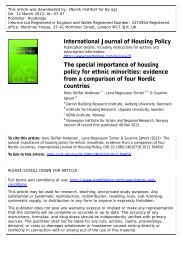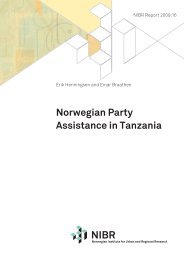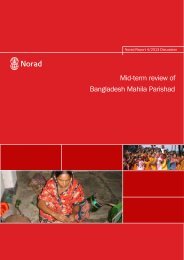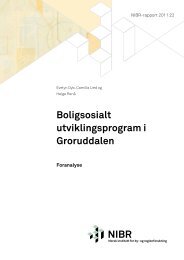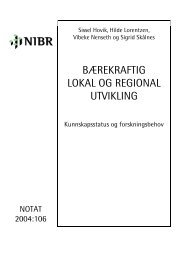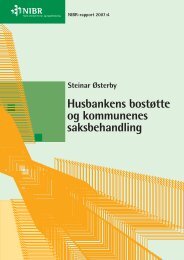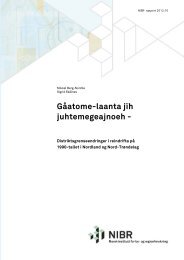Forvaltningsmuseenes og NIKUs ansvar og roller i forvaltningen av ...
Forvaltningsmuseenes og NIKUs ansvar og roller i forvaltningen av ...
Forvaltningsmuseenes og NIKUs ansvar og roller i forvaltningen av ...
- No tags were found...
You also want an ePaper? Increase the reach of your titles
YUMPU automatically turns print PDFs into web optimized ePapers that Google loves.
15SummaryArne Holm and Trine MyrvoldThe responsibilities and roles of the administrative museumsand Norwegian Institute for Cultural Heritage Research(NIKU) in the management of the archaeol<strong>og</strong>ical heritageNIBR Report: 2012:30Background and research issuesThe overarching aim of this study is to illuminate the operatingconditions, responsibilities and roles of the administrativemuseums and NIKU in the management of automatically listedcultural monuments and ship finds. 1 This includes the operatingenvironment in which outreach efforts, knowledge generation andresearch into the artefacts and sites under heritage managementtake place. This forms the background for a discussion of theeffect of the operating environment on the execution ofadministrative responsibilities. The challenges facing theadministrative museums and NIKU in the performance of theiradministrative duties are also discussed in view of the advantages1 Under the Norwegian Cultural Heritage Act, monuments, artefacts and sitesstemming from 1537 or before are automatically protected by law (i.e.‘automatically listed’). In the case of post-medieval sites, environments, objectsetc. which are considered of historical, artistic and cultural value, the relevantministry may issue a protection order. The ministry may grant exemptions fromprotection orders in special cases. In these cases, an assessment will be made bythe relevant authorities – usually specialists at the historical, cultural, maritimeand technical museums (i.e. the ‘administrative museums’ – forvaltningsmuseer),working t<strong>og</strong>ether with local and county authorities and the Directorate forCultural Heritage. An exemption order may also require an archaeol<strong>og</strong>icalinvestigation/exc<strong>av</strong>ation of the area. These investigations are known asadministrative archaeol<strong>og</strong>ical assessments (arkeol<strong>og</strong>iske forvaltningsundersøkelser).(For a translation of the Act, seehttp://www.regjeringen.no/en/doc/laws/Acts/cultural-heritageact.html?id=173106)NIBR-rapport 2012:30



